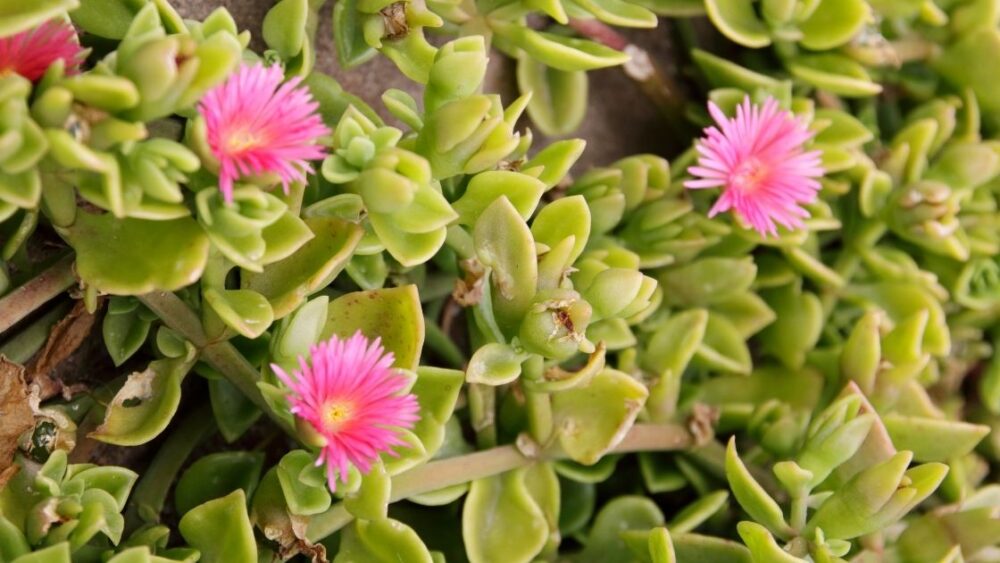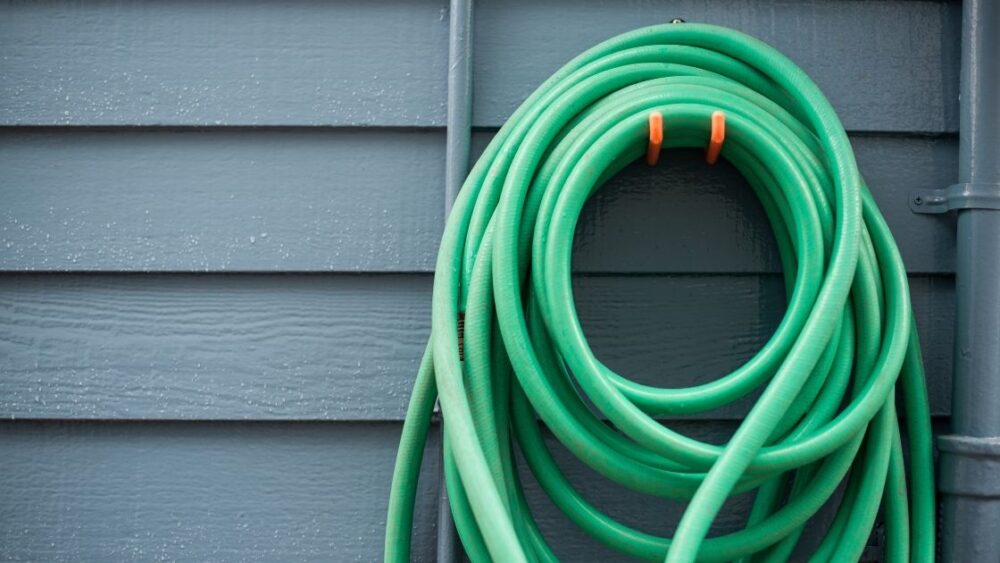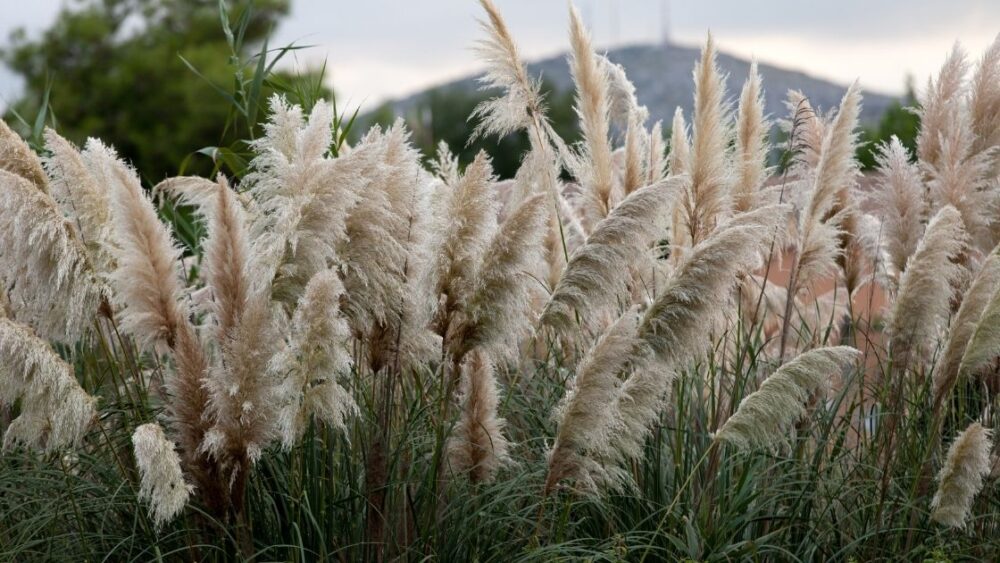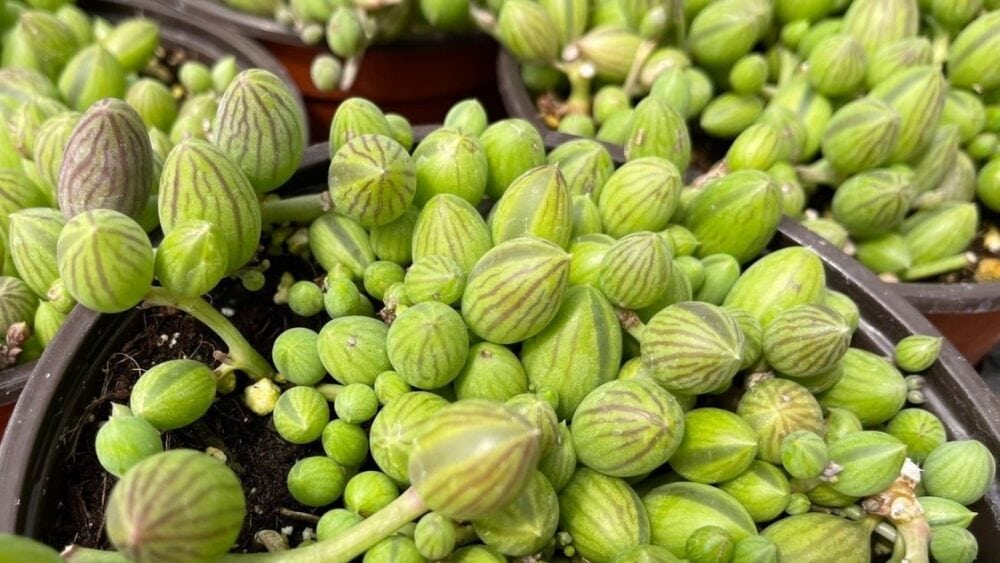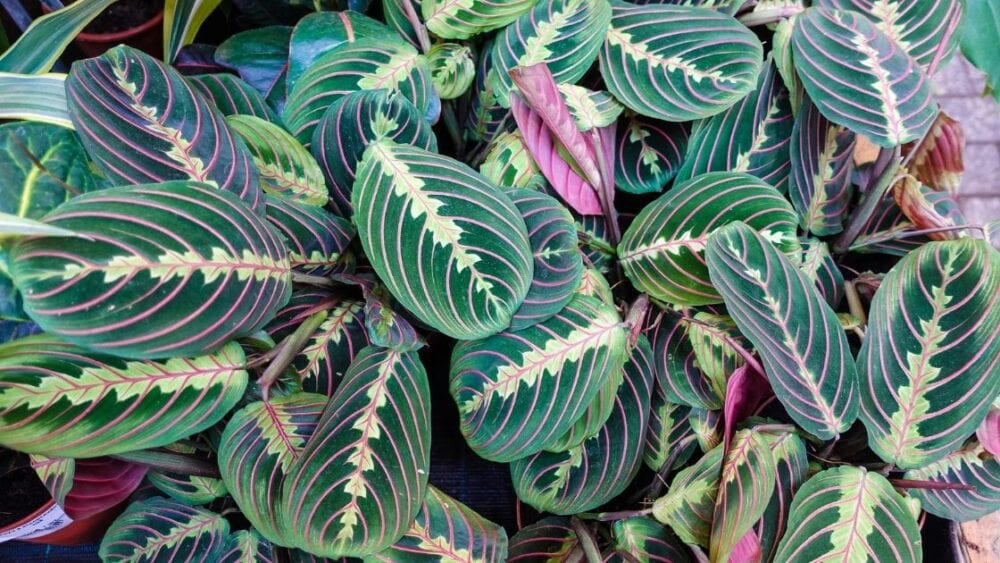
If the growing conditions don’t mimic a humid, tropical climate well, prayer plants will eventually start suffering and exhibiting various symptoms of stress. Discoloration of the leaves and severe wilting can occur. Fortunately, the problem is usually easy to diagnose and correct!
Prayer plants (Maranta leuconeura) are a favorite among indoor gardeners – they are extremely common and you’re likely to encounter them in even the smallest gardening stores. Although Maranta can survive most indoor conditions, it is in fact a tropical plant that likes high humidity and bright, indirect sunlight. It also requires a very airy soil that doesn’t hold on to too much water.
Common Causes of Wilting and Other Issues in Prayer Plants
In Maranta, wilting usually occurs together with leaf curl and discoloration. The problem usually first starts with browning of the tips of the leaves. If your plant suddenly starts wilting without any other apparent symptoms, consider simple causes like dehydration or heat stress. Let’s explore the various, more complicated causes of wilting in more detail:
Browse our Affiliate Products
Improper humidity
In its natural habitat, Maranta occupies the forest floor, where the humidity is often around 70% or higher. It’s not generally possible to achieve such humidity in your living room, without a lot of mold issues. A tiny greenhouse is the best option for raising the humidity to a tropical forest levels.
Daily misting can keep the humidity around the leaves in the same range, without the need for a greenhouse. The symptoms of low humidity are browning of the leaf edges and yellowing. The plant will also close up its stomata (the breathing openings on the leaves) when it senses that the humidity is too low – this will bring photosynthesis to a halt and reduce the growth rate.
For more information on misting plants, check out this article. Misting Plants – Pros, Cons, and How Does It Work?
Pests
Prayer plants are extremely susceptible to pests. In their natural rainforest habitat, there is a lot of competition between species and the environment is full of insects that feed on those pests and control them.
In our living rooms however, the pests can thrive. Mealy bugs are very common, as are spider mites and aphids. Various contact insecticides can quickly take care of the problem. Powdered diatomaceous earth, mineral oils and alcohol are the most harmless solutions to insect problems.
Light stress or light deficiency
Maranta can take direct sunlight only if has been acclimatized to it gradually and only if the humidity is high enough to prevent death by dehydration. In general, it will not be able to tolerate the direct sun while growing indoors. That said, you should give it the brightest possible indirect sunlight.
In light-deficient conditions, prayer plants will develop wilting and will take on an unhealthy, pale appearance. Those symptoms develop because of inability to transport water and nutrients and insufficient energy to create proteins. The lovely red and dark green hues of Maranta leaves will be the first to disappear in the absence of sufficient light levels and the plant will develop a dull, pale green color. Also, to read more on the types of shade and lighting for plants, check out this article. Shade Cloth vs Blinds: Which Is Better For Patio Plants?
Improper watering and root rot
Watering improperly, using an unsuitable soil that is not loam-rich and allowing for water salts to accumulate in the root zone can all cause root rot, stem rot or leaf spots to develop.
Watering with too little water that doesn’t produce sufficient runoff will eventually lead to calcium accumulation in the soil, which is not something Maranta can tolerate. Long-term bottom watering has the same effect. When enough water is used to produce runoff, the salts are continuously washed off and don’t accumulate.
Too frequent watering, regardless of the amount of water used can lead to stem base rot, which can kill the plant. Because root rot kills a large portion of the roots and stem rot prevents a lot of the ‘juices’ from reaching the leaves, the symptoms of both are yellowing and a wilted appearance.
This is a difficult problem to solve and it’s best to focus on preventing it, by avoiding constant moistness of the soil surface and by using proper soil. Most rotting problems will require repotting to solve.
What Causes Leaf Drooping in Prayer Plants?
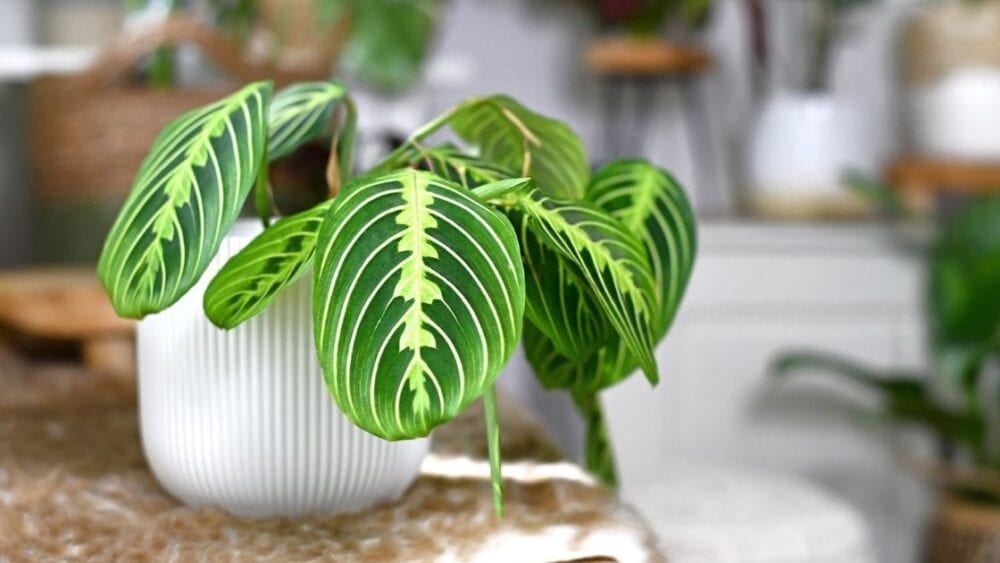
It’s natural for the leaves of Prayer plants to point downwards at night and move back up in the morning. This is a natural cycle that has nothing to do with the water needs of the plant.
How to Correct Wilting, Drooping or Leaf Spots in Prayer Plants
Flushing the soil with excess water, giving the plant stronger indirect light and taking care of insect pests usually solves most problems. The most difficult problems to solve are fungal attacks and stem/root rot problems.
Fungal infestations can be difficult to tell apart from the leaf spots caused by low humidity or light stress and can be controlled with a fungicidal spray. Stem rot and root rot are best solved by repotting, followed by a temporary humidity dome or generous misting until the plant recovers.
Optimal Growing Conditions for Prayer Plants
Humidity and light levels (strong, but indirect light) are the most difficult factors to dial in when caring for this plant.
However, there is some luck involved as well – prayer plants can sometimes thrive in very dry office areas and even next to space heaters. This probably depends on the genetics/variety of the particular plant, as well as on a multitude of other factors, like air drafts and the soil quality.
Also, for other types of house plants, check out our other articles here: House Plants
How much sunlight do Prayer plants need?
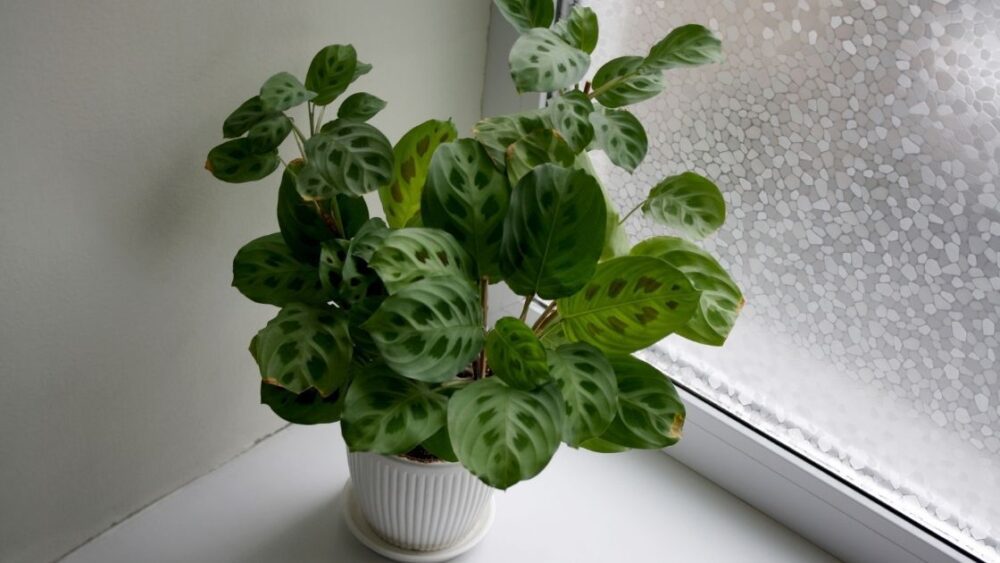
Strong, indirect sunlight is ideal. Direct sunlight, filtered through a window will support the most rapid growth, but without previous gradual acclimation you’ll be risking permanent leaf spots.
What temperature is ideal and how hardy are they?
Any indoor temperature works fine (70 – 85F / 21 – 30C). Prayer plants are not frost tolerant at all and long-term growth retardation can occur if they are exposed to a temperatures lower than around 55F (12C).
What type of soil is required?
Loam soil, combined with peat moss and perlite works best. Good soil can be recognized by being very ‘light’ – when the potting container is in need of watering it won’t have much weight at all. Heavy, compacted soil will lead to rotting problems.
How often should you water?
Allow for a brief drought period of the root zone between each watering. Depending on your climate and humidity, the ideal watering frequency can be anywhere between once every 3-4 days to once every 2 weeks.
Potting size and repotting

Consider repotting only when the plant becomes root bound or if it suffers from rotting problems. Signs that the plant requires repotting will be stunted growth and various deficiencies (usually manifesting in leaf discoloration) due to the soil being spent. For more information on pot and pot sizes, check out this article. What is the perfect pot for my plants?
Do prayer plants do well outdoors?
Maranta does well outdoors during the summer, but it should not be exposed to direct sunlight, or even to partial shade. Full shade with plenty of indirect light works well.
Final Thoughts
Even though Prayer plants are tropical species, they can sometimes thrive in dry indoor areas. Unfortunately, this is more of an exception than the rule – most Marantas will require high humidity in order to grow well and low humidity will quickly lead to the development of brown spots. Wilting in prayer plants is usually caused by too frequent watering, compacted soil, lack of sufficient indirect light or too low air humidity.








